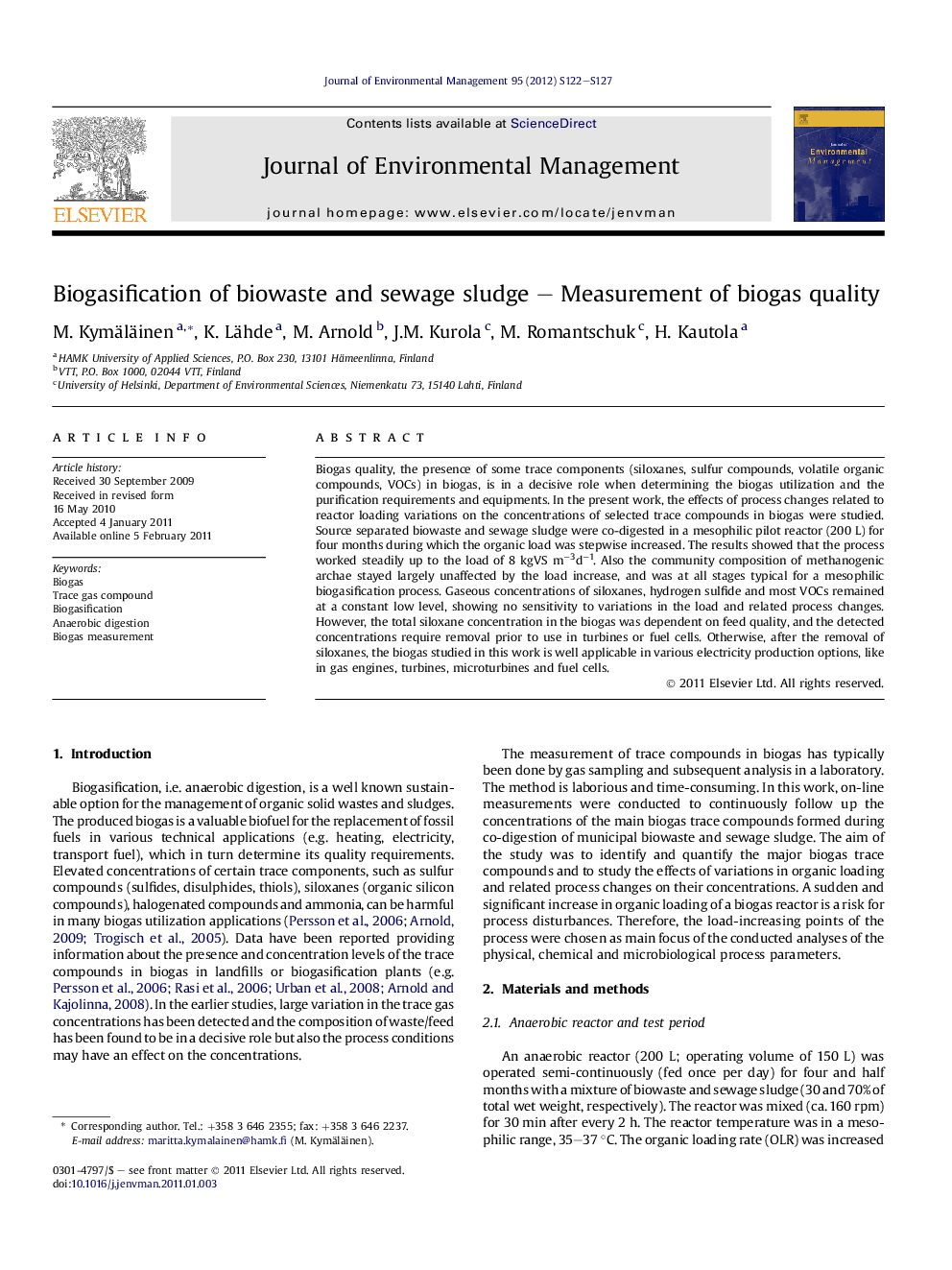| Article ID | Journal | Published Year | Pages | File Type |
|---|---|---|---|---|
| 1057039 | Journal of Environmental Management | 2012 | 6 Pages |
Biogas quality, the presence of some trace components (siloxanes, sulfur compounds, volatile organic compounds, VOCs) in biogas, is in a decisive role when determining the biogas utilization and the purification requirements and equipments. In the present work, the effects of process changes related to reactor loading variations on the concentrations of selected trace compounds in biogas were studied. Source separated biowaste and sewage sludge were co-digested in a mesophilic pilot reactor (200 L) for four months during which the organic load was stepwise increased. The results showed that the process worked steadily up to the load of 8 kgVS m−3d−1. Also the community composition of methanogenic archae stayed largely unaffected by the load increase, and was at all stages typical for a mesophilic biogasification process. Gaseous concentrations of siloxanes, hydrogen sulfide and most VOCs remained at a constant low level, showing no sensitivity to variations in the load and related process changes. However, the total siloxane concentration in the biogas was dependent on feed quality, and the detected concentrations require removal prior to use in turbines or fuel cells. Otherwise, after the removal of siloxanes, the biogas studied in this work is well applicable in various electricity production options, like in gas engines, turbines, microturbines and fuel cells.
